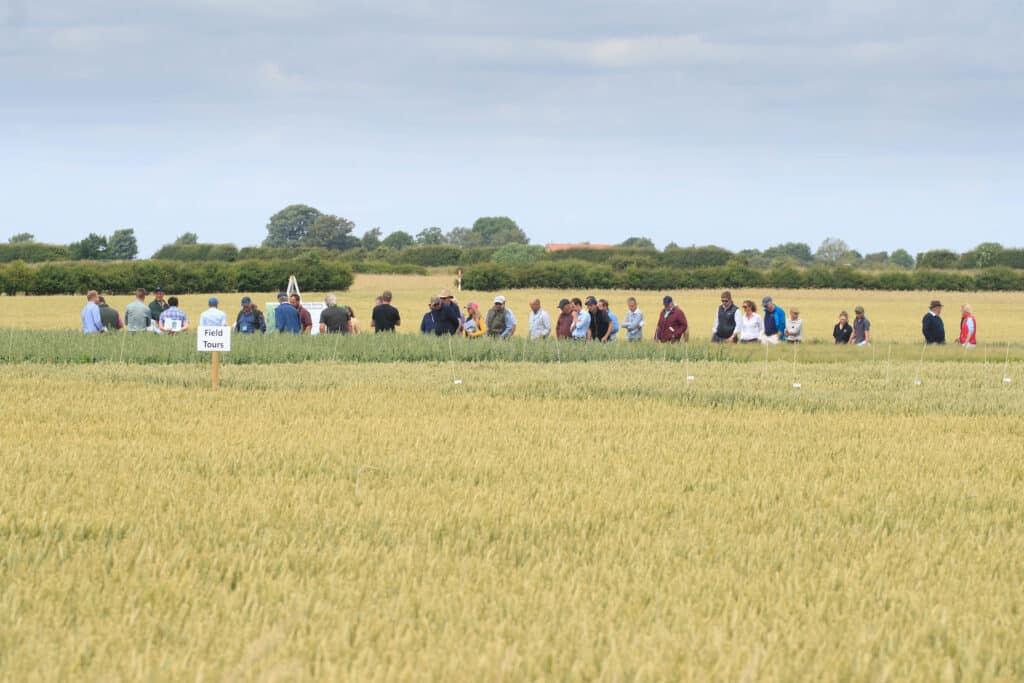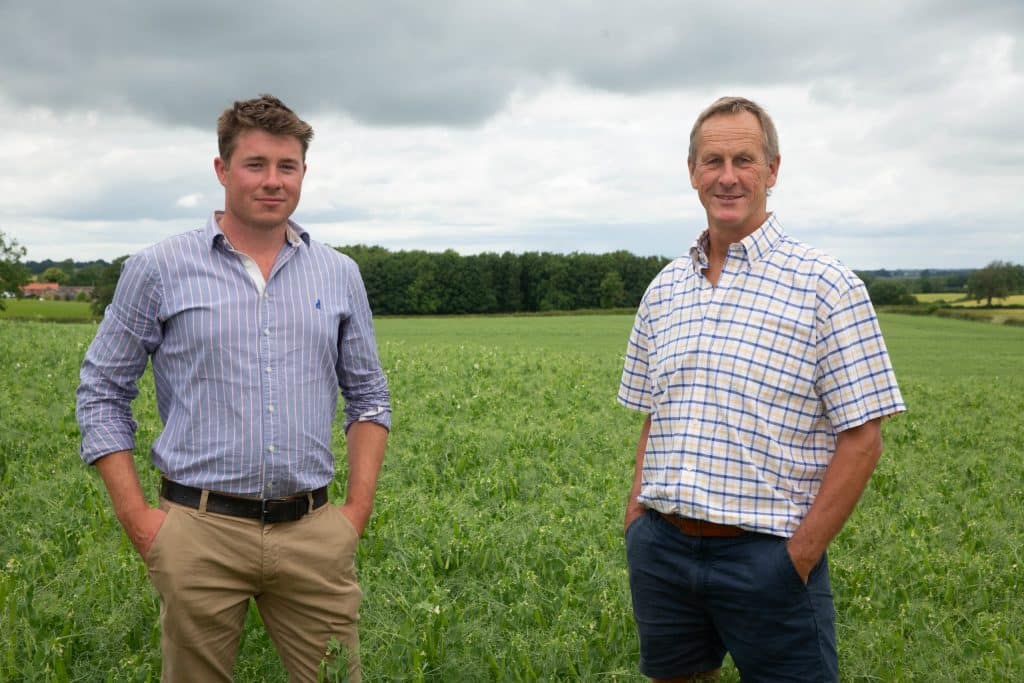A funnel of R&D dissemination – Crop Production Magazine
Ensuring UK growers have access to the latest technologies and relevant innovation has become integral to the delivery of Hutchinsons’ R&D focus ...
From collaborating with European partners on big ticket topics through to individual glasshouse proof of concept experiments, ensuring UK growers have access to the latest technologies and relevant innovation has become integral to the delivery of Hutchinsons’ R&D focus. CPM finds out more.
Research and development – mostly known as R&D – operates at a multitude of levels, particularly when it comes to the adoption of new technologies. It can present itself as a global-scale multi-million-pound project, but it can also involve a sole laboratory experiment.
Although for those at the creation side of proceedings, innovation is often thrilling and laden with potential, on the other hand, it’s relatively meaningless unless it presents a viable solution to a real-life problem experienced by an end-user. In this case, the farmer.
Bridging the gap between innovation and on-farm adoption has arguably become a role for agronomy companies and their technical experts, who act as a screen for new technologies. However, Hutchinsons aims to take that a step further – developing an R&D funnel approach whereby the scope starts at an international level, drilling down through the layers to strip trials and individual pot experiments.
Furthermore, regardless of the scale of the work or innovation in question, Hutchinsons believes it’s part of its role to understand the ‘so what?’ – to answer why it’s of relevance to UK farm businesses and whether it truly presents a viable solution for the industry.
R&D DISSEMINATION
“Recognising innovation comes in many forms, we aim to showcase and disseminate the breadth of R&D that we’re involved with throughout the market, whether that’s traditional crop protection products and services, or alternative solutions,” explains development manager, Jennie Watson.
“We achieve this through a range of approaches – from glasshouse proof of concept work and small-scale plot trials through to our network of Regional Trial Centres and Helix farms. Then beyond this, we collaborate at a European level to help identify commonalities and share best practice.
“It’s a multi-faceted strategy where we aim to crystallise that research and those new ways of thinking into something truly meaningful for UK growers,” she says.
Hutchinsons’ relationship with Novafield Alliance – a collaboration of agricultural distributors, cooperatives, unions and private retailers across 14 countries – began in 2008. The purpose was to develop a two-way association where learning through differences is as important as understanding similarities.
In February, Hutchinsons hosted Novafield’s technical team at its blackgrass management site at Cambourne in Cambridge. Jennie says discussions centred around the field-scale trials at the farm which investigate the impact of cultivations, placement fertilisers, drainage, soil management and herbicide programmes on weed control.
Although not yet registered in Europe, Hutchinsons was also able to demonstrate the performance of new UK herbicide active ingredients cinmethylin (Luximo) and bixlozone (Isoflex). “With Europe having voted to revoke flufenacet and its UK future looking uncertain, Novafield’s visit proved an opportune moment to share learnings related to both cultural control and herbicide use,” comments Jennie.
“From our perspective, we could also benefit from understanding the new innovation being launched in many European countries as a result of significant pressure to reduce inputs and focus on water quality.”
Novafield Alliance meets around three times a year with recent discussion topics including disease management, in particular late blight control in potato crops, the use of varietal blends, and alternative sources of nitrogen.
Meetings also facilitate improving access to new technologies. “Our relationship with Ecorobotix – a precision spot sprayer from Switzerland – is the result of our collaboration with Novafield,” highlights technical director, Stuart Hill.
“Because precision application is a highly important and common topic within Novafield, it meant we could access an Ecorobotix machine to demonstrate the benefits to UK growers. In return, we’ve been sharing findings from our relationships with SMEs such as Messium, PES and Elaniti.”
Hutchinsons’ work with innovators, agri-tech businesses and SMEs is primarily delivered through its Helix project – a growing network of farms that evaluate technology and data on a field-scale to support on-farm decision making.
HELIX LAUNCH
First conceptualised in 2017, Helix was officially launched a year later when Andrew Pitts of Moat Farm in Northamptonshire became its first host. Now, with soon-to-be eight farms on board, Stuart says it’s evolved to focus on tailoring R&D work to each grower’s future goals and ambitions.
“We’re all being exposed to a plethora of technologies such as data analytics, climate systems, machine learning, sensors, monitoring and detection systems, autonomy and robotics. However, there’s a demand to evaluate which of these innovations are relevant and will ultimately increase productivity and profitability, as well as efficiency, both for the grower and the agronomist.
“We have to be able to rationalise these technologies into a benefit for the grower and screen their viability, which is where Helix comes in.”
And not all technologies make it through to the other side during the Helix process, highlights Jennie. “We have to be open – not everything will work on farm because it either fits into the research arena, or doesn’t work from a practical perspective.
“However, TerraMap – Hutchinsons’ soil mapping system – is a tool which has successfully been screened by the Helix project. Equally, Omnia and its recent update was piloted using our Helix farms.”
A concept which has recently caught the imagination of the industry is Messium’s precision nitrogen service which is based on hyperspectral imaging and satellite technology. Hutchinsons is a partner on an Innovate UK-funded project to ground-truth Messium’s technology using Helix farms.
PES Technologies is another agri-tech company which is working with the Helix project, this time to assess its new hand-held soil testing device.
Then, from an even more applied perspective, Hutchinsons has its Regional Trials Centres (RTCs) which host practical field work across the country. The nine farms act as regional demonstration sites to evaluate aspects such as variety choice, with activity overseen by independent contractors.
This year, the RTCs are investigating a broader, integrated theme: ‘Strategies for success’, explains Stuart. “This includes looking at the influence of environmental concerns, utilising digital tools such as Omnia , the role of soils and cultivation methods, optimising nutrition and finally grassweed control.”
He adds that to disseminate learnings from the RTCs, Hutchinsons invites its growers to a series of summer open days and engagement opportunities. “This is in addition to open days for our potato demonstration farm, specialist cropping sites and environmental site,” says Stuart.
At an individual product level, smaller scale R&D work takes place using plot trials and glasshouse proof of concept experiments. This might include initial pot studies to evaluate the performance of a specific biostimulant product, for example, says Jennie.
“This type of screening work occurs prior to replicated field work, which is where we confirm a product’s actual performance.”
According to Jennie, the strength of Hutchinsons’ R&D work lies in offering a breadth of provision, working across the entire rotation and for a range of different system approaches. “And by collaborating across themes and identifying synergies, we can establish a holistic approach to crop management with joined up thinking.”
To conclude, Stuart stresses the importance of relationships: “We can’t operate in isolation, we have to work together whether that’s at a global, European or local level. Furthermore, by weaving technology into the mix, we have the ability to maximise the latest innovation, but without borders.”
Forging ahead as a Helix farm
On-farm benefits from being a part of the Helix project
With five years of Hutchinsons’ Helix project under his belt, Yorkshire farmer Nick Wilson says he’s used the opportunity to take his business to the next level.
Based in the Vale of York with 260ha across three varied units, the main site, Hundayfield Farm, plays host to Helix.
Soils here are mostly free-draining sandy loams and the farm’s rotation involves winter wheat, spring barley, grassland, fodder beet, spring wheat and oilseed rape, with a small area rented out for potato production.
Nick says his involvement with Helix started during a conversation with agronomist Sam Hugill, where they discussed the farm hosting trials for Hutchinsons. With Nick being willing to engage with new technologies as well as the wider industry, he proved an ideal candidate.
“The main incentive was being able to take our farming a step further – using technology and trial work to gain a greater understanding so we could calibrate our actions and be involved at a deeper level,” explains Nick.
“Access to this depth of insight has been excellent and we’ve learnt so much. Ultimately, it validates what we’re doing and means we can compare with others in the Helix project.”
The first trial the farm undertook investigated cover crop establishment using different drill set ups, but that’s been the tip of the iceberg, he says. Since then, Nick has been involved with an NUE experiment to evaluate alternative sources of nitrogen, looked at varietal blends and hybrid wheat options, rolled out TerraMap and each guise of the Omnia farm management software, and is now part of the Messium pilot.
According to Sam, the magic has been Nick’s willingness to engage with innovative solutions and approaches. “For example, Nick was already undertaking tissue and soil testing, but we’ve been able to work together to take that up a gear.
“He’s certainly in the early adopter category, and it’s even better that he wants to share the farm’s learnings for the greater good of the industry,” comments Sam.
Nick adds that one of the highlights so far has been contributing to Omnia’s development. “We’ve grown with it as it’s evolved and now it’s a fully-encompassed tool for farm management. It’s proven hugely helpful as a way to track responses to the actions we’re undertaking on the farm; monitoring and recording data so we can benchmark and compare.”
Whether it’s yield mapping, variable rate seed or SAP testing, each year introduces new techniques and approaches to crop management, highlights Nick. “The main driver is to improve the farm, but equally it’s about contributing to the wider industry to help propel it forward.”
Sam agrees: “We want these types of farms who are proactive and industry leaders. Then it’s a case of working together, introducing new ideas and sharing the resulting narrative,” he concludes.
Innovation Insight
Hutchinsons remains committed to investing in a broad range of R&D activities, whether that’s disseminating the latest insights from Europe, right through to sharing the data from an individual UK glasshouse trial. All the while, the aim is to ensure the innovation pipeline is relevant to UK farming businesses and the challenges they face on a daily basis. Central to Hutchinsons’ R&D is the Helix project which strives to align new and old technologies, evolving and developing them to improve crop management decisions. This also includes a network of Helix farms – a diverse group of growers who contribute to the development and testing of these technologies across different regions, climates, and challenges.
CPM would like to thank Hutchinsons for sponsoring this article and for providing privileged access to staff and the material used to help bring it together.
For more information about open days at Helix sites and RTCs visit www.hutchinsons.co.uk/event/

